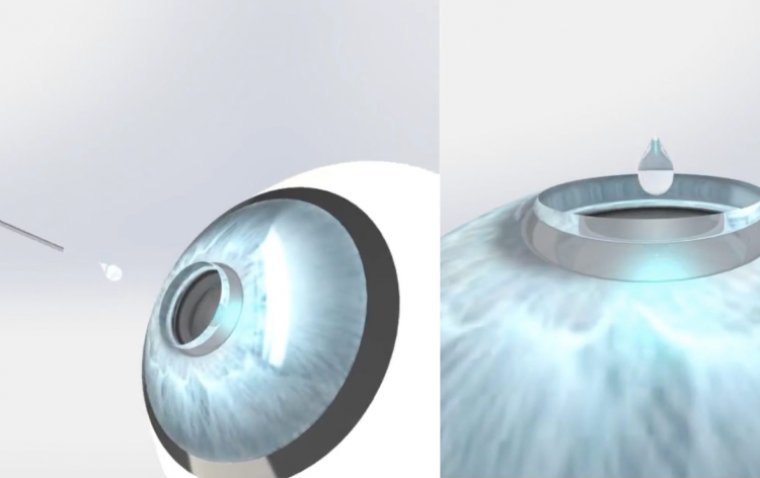
Steps to Reduce the Carbon Footprint of Intravitreal Injections
Adopting specific treatment protocols, minimizing travel for patients and staff, and reducing unnecessary use of personal protective equipment (PPE) can significantly decrease the carbon footprint of intravitreal injections. This topic was discussed in detail by Redmer van Leeuwen, MD, PhD, at the Euretina congress in Barcelona, Spain.
Variations in Intravitreal Injection Practices
Intravitreal injections are widely performed and have substantial environmental impacts due to carbon emissions. However, no standardized approach exists across different countries or clinics, according to van Leeuwen. He pointed out the inconsistency in practices, stating, “There’s a huge difference between how we do this procedure in different countries and different clinics ... and there is also a big difference in the materials we use and the waste we produce.”
For instance, some hospitals perform these injections in operating rooms, which require more energy. Shifting these procedures to office-based settings is an “easy change” that can reduce energy consumption. Additionally, he recommended using alcohol-based hand rubs instead of water for hygiene.
Reducing Travel-Related Emissions
According to a study by Power and colleagues, approximately 75% of the carbon footprint associated with intravitreal injections comes from patient travel. Several strategies can help reduce these emissions:
•Performing consultations and injections on the same day
•Adopting treat-and-extend protocols
•Administering bilateral injections on the same day
Decentralized injection hubs, such as those implemented by Moorfields Eye Hospital in London, also offer a potential solution by reducing travel distances for patients.
Longer-Acting Drugs and Home Monitoring
Van Leeuwen noted that longer-acting medications, which are expected to become available in the near future, along with home monitoring solutions, will help minimize the need for frequent clinic visits, further reducing the carbon footprint of intravitreal treatments.
Reducing Waste in Intravitreal Packs
The environmental impact of drug production is still unclear, but van Leeuwen emphasized the importance of reducing waste in intravitreal injection packs. “We can refuse unused materials and reduce packaging,” he said, suggesting the use of alternative materials like paper instead of plastic to further cut down on environmental waste.
Optimizing Personal Protective Equipment Use
While PPE such as face masks remains essential, van Leeuwen suggested that some commonly used items might not be necessary. Sterile gloves, gowns, patient hair covers, and face drapes are not required for the procedure since the needle does not come into contact with the skin. Some clinics even avoid using a speculum, instead holding the eyelids open manually, although this practice is met with some resistance.
Additionally, forceps are often unnecessary for fixing the eye during the procedure.
Rethinking Infection Prophylaxis
Povidone-iodine remains a critical component in preventing infectious endophthalmitis. However, antibiotics are not needed. “It’s proven that [antibiotics] are not attributable to infection reduction,” van Leeuwen stated.
Recycling and Sustainability Efforts
Finally, van Leeuwen advocated for separating and recycling waste, which can help practices save money and raise awareness of sustainability. These efforts contribute to reducing the environmental impact of intravitreal injections and promoting a greener approach to ophthalmic care.
Other Useful Approaches for Reducing the Carbon Footprint
Optimize Patient Scheduling
Reduce multiple visits by combining treatments and check-ups when possible, reducing travel-related emissions. For instance, scheduling injections alongside routine follow-ups can significantly cut down the number of trips patients need to make to the clinic, leading to a reduction in carbon emissions from transportation. Coordinating appointment times for patients who require multiple types of care can also improve clinic efficiency.
Streamline Packaging and Waste Management
Use eco-friendly packaging materials for supplies, such as biodegradable or recyclable options, and implement strict waste segregation and recycling procedures. Encourage the use of minimal packaging for medical supplies to reduce plastic waste. Ensure that single-use items are disposed of properly and that recyclable items are separated and processed accordingly. Clinics can also work with waste management companies that specialize in medical waste to ensure compliance with environmental standards.
Embrace Reusable Equipment
Transition to sterilizable and reusable equipment where feasible, such as stainless steel instruments instead of single-use plastic. Where possible, use multi-use surgical kits that can be sterilized and reused without compromising patient safety. This reduces the reliance on disposable plastic items and helps decrease overall medical waste. Staff training on proper sterilization procedures ensures that safety standards are maintained.
Reduce Energy Consumption
Adopt energy-efficient lighting and appliances in clinics, such as LED lighting and energy star-rated devices. Schedule energy use to limit consumption during non-peak hours by turning off equipment and lights when they are not needed. Consider using motion-sensor lights in less frequently used areas to avoid unnecessary energy consumption. Additionally, optimizing HVAC systems for better efficiency can significantly reduce the clinic's overall energy usage.
Digitalize Documentation
Use digital platforms for records and communications to reduce paper use and minimize waste. Implement electronic health records (EHR) and patient management systems to streamline documentation and reduce reliance on physical paperwork. Encourage staff to use digital notes and avoid printing unless absolutely necessary. Patient communications, such as appointment reminders, can also be sent via email or text messages instead of traditional mail.
Implement Telemedicine Follow-ups
Utilize telemedicine for follow-up consultations, decreasing unnecessary travel for patients and optimizing clinical time. By conducting virtual consultations for post-treatment follow-ups or initial assessments, patients can avoid the need for in-person visits, which reduces emissions from travel. This is particularly beneficial for patients living in remote areas who would otherwise need to travel long distances for routine check-ups.
Promote Environmentally Responsible Suppliers
Partner with pharmaceutical and equipment suppliers who are committed to sustainability, supporting green initiatives. When selecting suppliers, prioritize those who use environmentally friendly manufacturing processes, sustainable packaging, and ethical sourcing practices. Engage with suppliers who actively work towards reducing their carbon footprint and who align with the clinic's sustainability goals.
Educate Patients and Staff
Inform both patients and staff about sustainable practices and their role in reducing the carbon footprint. Conduct training sessions for staff on sustainable practices, such as proper waste segregation and energy-saving measures. Provide patients with educational materials that highlight the importance of sustainability in healthcare and offer tips on how they can contribute, such as reducing travel by utilizing telemedicine options. Encouraging an environmentally conscious culture within the clinic can lead to more widespread adoption of green practices.
(1).jpg)










